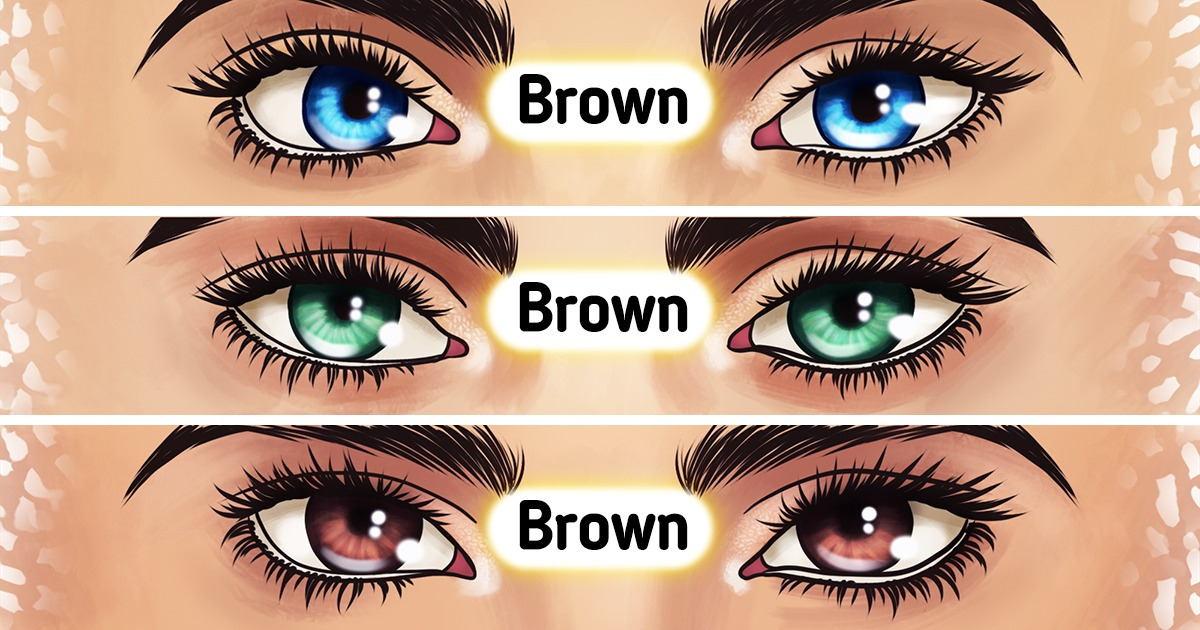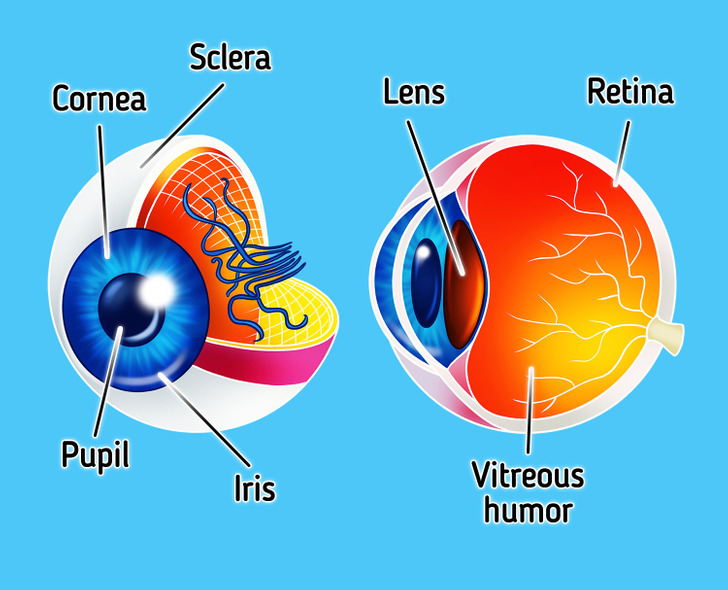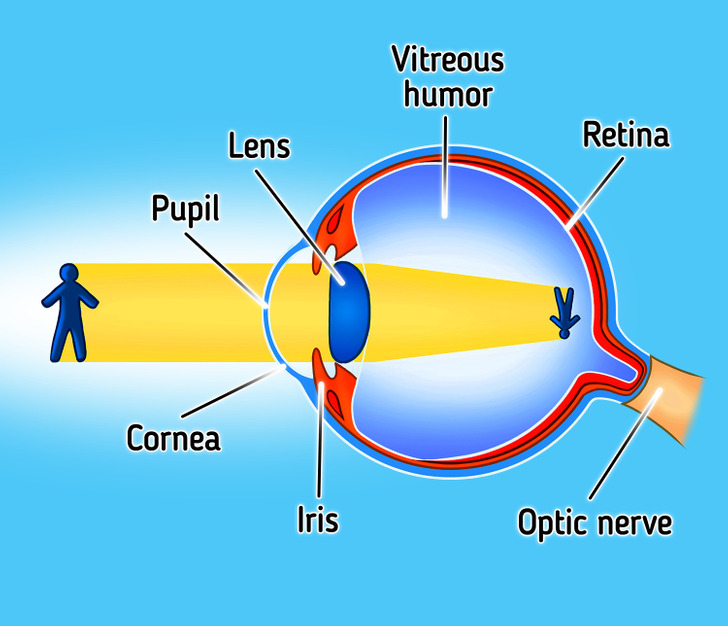How the Human Eye Works

We use our vision every day. But do we ever think about how complex it is? For example, all people’s eyes can produce a brown pigment, but blue and green eyes are quite abundant too.
5-Minute Crafts found out more about how the human eyes work, how they allow us to see the world, and what other interesting features they have.
How the eye works

The human eye is the organ that can receive visual images and carry them into the brain. It consists of several elements:
- Conjunctiva — this is a transparent protective membrane on the surface of the eye.
- Sclera — a white part surrounding the iris and the pupil. It doesn’t gather any visual data but it plays a protective function for the eye.
- Cornea — it consists of a white layer that helps focus the incoming light and make the picture crisp. It’s on top of the iris and pupil and is another protective layer.
- Anterior chamber — this is a small pocket with fluid that helps the cornea and the pupil focus the light. It is between the cornea and the iris.
- Posterior chamber — this is between the iris and the lens and it helps focus the light.
- Iris — this is the colored area around the pupil. Thanks to melanin, all people’s eyes can produce only the brown pigment but when there’s little melanin, the iris reflects a lot of light that seems blue. Sometimes, a yellow pigment is produced when there’s little melanin. When it’s mixed with the reflected blue, the eyes look green.
- Pupil — this is the central part of the eye connected to the posterior chamber. It looks black because the light goes through it and doesn’t come back.
- Lens — it’s right behind the pupil and it finalizes the light focus.
- Vitreous humor — this is a thick fluid that fills most of the eyeball. Its job is to refract the light with a constant speed and keep the eye round.
- Retina — this is a light-sensitive layer covering the inner part of the eyeball. It converts the information given by the eye into electric signals. For the retina to see a crisp image, the light should be focused onto it with the other part of the system. Additionally, the retina has 2 types of receptors — cone cells and rod cells. Cone cells allow us to see different colors and rod cells help us see things in the darkness.
- Optic nerve — this is a bundle of neural fibers that helps us send the image from the retina to the brain.
How our vision works

All the eye elements work together so that we can see the world around us. This is how it happens:
- First, the light goes through the cornea. It helps focus the vision.
- The light partially gets into the pupil, but the amount of the light is controlled by the iris.
- The light goes through the lens, working together with the cornea focusing the light.
- After that, the light falls onto the retina where the receptors convert it into electrical signals.
- The signals travel to the brain through the optic nerve.
- The brain transforms the signals into the images we see.
Another important thing our eyes need in order to function properly is tears. Every time we blink, the tears moisturize the eye surface and focus the light. Plus, the tears help us protect the eyes from dirt and dust.
Some facts about eyes
Several facts about eyes:
- A human eye has a diameter of around 2.5 cm and a weight of 7 grams.
- A human eye can see around 10 million different colors.
- On average, people blink 4.2 million times a year.
- The most abundant eye color in the world is brown.
- Tigers’ night vision is 6 times better than that of humans.
- The fear of eyes is called ommetaphobia.
- Pirates wore earrings because they thought it made their vision better.
- Check if you have central heterochromia — a phenomenon when the inner ring of the iris, or the eye color closest to your pupil, is a different color than the outer ring along the edge of your iris. When melanin is distributed differently closer to the pupils, light reflects off of it in a different way and gives the appearance of two different colors in each iris.